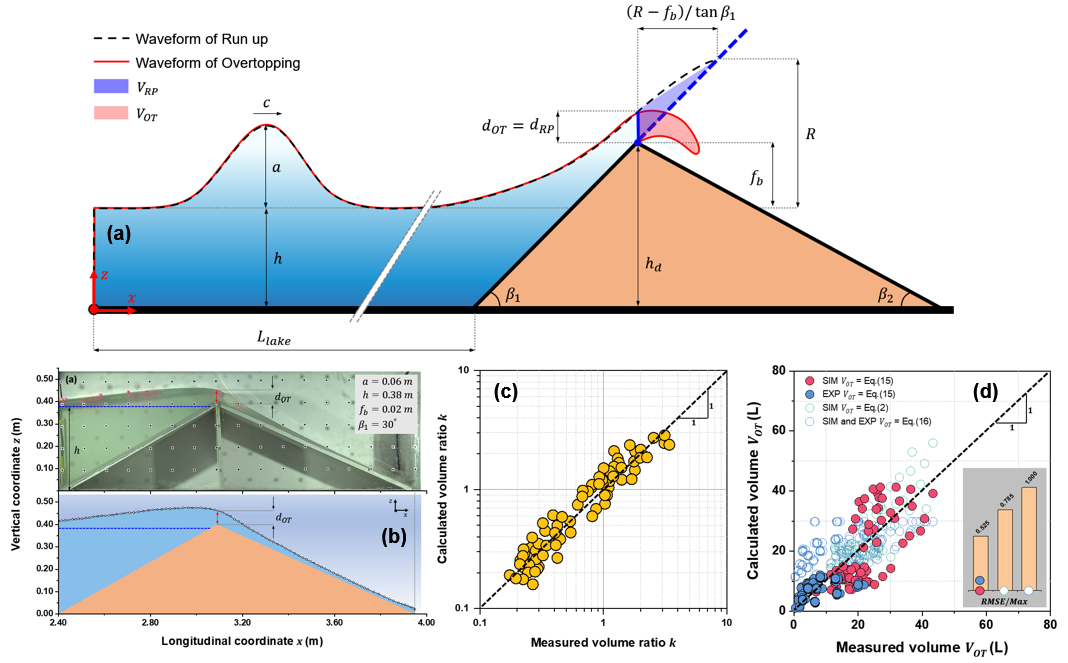As a result of global climate change, glacier lakes are rapidly expanding around the world, increasing the risk of outburst floods. These floods can be triggered when rock or rock-ice avalanches, or glaciers abruptly collapse onto glacier lakes thereby generating massive waves which destabilize their natural barriers. At present, there is limited research on the mechanisms of waves overtopping natural dams. Therefore, the models which predict the volume of overtopping water, a key parameter needed for the mitigation of glacier lake outburst hazards, remain unavailable. In response to this problem, Prof. Gordon G.D. Zhou and his team carried out numerous experiments and numerical simulations aimed to evaluate the key parameters that control the overtopping of waves having different wave heights. An empirical formula was derived, based on the geometrical similarities of the overtopping process and the run up of fluids on rigid inclinations, that allow for the rapid estimation of overtopping volumes and hence the impact range of glacial lake outburst floods. This is of great significance for the prediction of glacial lake outburst flood disasters.
The research paper, one of the major outcomes, has been published on Engineering Geology on June 2022. This research is supported by Alliance of International Science Organizations (ANSO)-Chinese Academy of Sciences (CAS) Joint Research Project entitled “Numerical simulation and risk analysis of landslide hazard chains in high-mountain Asia considering the effects of global climate change” (ANSO-CR-KP-2021-07) and the China-Germany Mobility Programme of the National Natural Science Foundation of China (M-0145).

Fig. 1. (a) Schematic diagram of wave run-up (blue dashed profile) and overtopping (red solid profile) processes highlighting their geometric similarities. (b) Comparison of overtopping wave profiles observed from experiments (top) and as obtained from numerical simulations (bottom). Comparison of predicted and measured values of the (c) proportionality coefficient and (d) the overtopping volume.
Contact:
Prof. ZHOU Gongdan
Institute of Mountain Hazards and Environment, Chinese Academy of Sciences
Chengdu, Sichuan, 610041, China
E-mail: Contact: gordon@imde.ac.cn
